
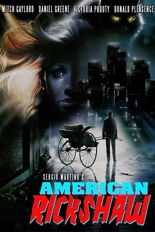 In the early 1930s, Hollywood tapped Olympic gold medalists Johnny Weissmuller and Buster Crabbe to play Tarzan. Half a century later, when high-concept action became big box office, studios wanting to shepherd the next Stallone or Schwarzenegger again looked to the middle of the medal podium; within 13 months of one another, moviegoers could see Kurt Thomas in Gymkata, Bart Conner in Rad and Mitch Gaylord in American Anthem.
In the early 1930s, Hollywood tapped Olympic gold medalists Johnny Weissmuller and Buster Crabbe to play Tarzan. Half a century later, when high-concept action became big box office, studios wanting to shepherd the next Stallone or Schwarzenegger again looked to the middle of the medal podium; within 13 months of one another, moviegoers could see Kurt Thomas in Gymkata, Bart Conner in Rad and Mitch Gaylord in American Anthem.
Had those flicks clicked, who knows? We might have Michael Phelps defending God’s pool as Aquaman or Simone Biles crushing it as Katniss in The Hunger Games franchise. Although I have no evidence, I’d like to think Gaylord’s sophomore slump, American Rickshaw, served as the final nail in this miscasting coffin.
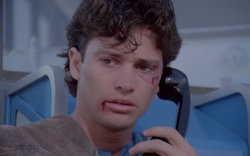 Gaylord’s Scott is a struggling full-time college student who works as a part-time rickshaw driver in Florida. One night, slinky redheaded stripper Joanna (one-and-doner Victoria Prouty) offers intercourse as a tip, which he accepts … until he realizes their shower romp is being videotaped by a thumbless perv (Gregg Todd Davis, Nightmare Beach) who happens to be the son of televangelist Rev. Mortom (Donald Pleasence, The Great Escape). The young Mortom is killed by a towering hulk (Daniel Greene, Hands of Steel) who frames Scott as the culprit, then sets out to kill him, too. Scott need only not get murdered, but clear his name and find that sex tape!
Gaylord’s Scott is a struggling full-time college student who works as a part-time rickshaw driver in Florida. One night, slinky redheaded stripper Joanna (one-and-doner Victoria Prouty) offers intercourse as a tip, which he accepts … until he realizes their shower romp is being videotaped by a thumbless perv (Gregg Todd Davis, Nightmare Beach) who happens to be the son of televangelist Rev. Mortom (Donald Pleasence, The Great Escape). The young Mortom is killed by a towering hulk (Daniel Greene, Hands of Steel) who frames Scott as the culprit, then sets out to kill him, too. Scott need only not get murdered, but clear his name and find that sex tape!
Conspiracy, secrets, homicide, a femme fatale, unlabeled VHS cassettes, AIDS needles — all pretty standard stuff for a thriller of that era, but Sergio Martino is no standard director. Known more for his stellar work in the giallo (The Strange Vice of Mrs. Wardh, et al.), he introduces one weird, wild supernatural element to keep things from being too generic: an immortal Asian witch (Michi Kobi, 12 to the Moon) who helps protect Scott by teleporting a cobra and turning Rev. Mortom into a satanic warthog on live TV — but not at the same time, mind you, because that would be stupid. At least the script offers an ironclad reason for the witch’s kindness: because Scott helped her onto his rickshaw on a rainy afternoon.
 Seeing as how American Rickshaw (aka American Tiger) contains nary a pommel horse, the logic in hiring Gaylord is negligible. Then just shy of 30, he looks like a preening preteen, yet is a real wet blanket on screen. His line readings are so wooden, he could have found them near the contractor’s entrance at Home Depot. He can’t convincingly act an sexual encounter in the shower, which he’s certainly had in real life; by contrast, as the antagonist, Greene sells the hell out of a magic key burning straight through his hand like Alien acid, as if he’s lived it a hundred times before, just as Pleasence commits to uncontrollable oinking — ever the professional, no matter how embarrassing. And this one is that, to all involved, to our eternal enjoyment. —Rod Lott
Seeing as how American Rickshaw (aka American Tiger) contains nary a pommel horse, the logic in hiring Gaylord is negligible. Then just shy of 30, he looks like a preening preteen, yet is a real wet blanket on screen. His line readings are so wooden, he could have found them near the contractor’s entrance at Home Depot. He can’t convincingly act an sexual encounter in the shower, which he’s certainly had in real life; by contrast, as the antagonist, Greene sells the hell out of a magic key burning straight through his hand like Alien acid, as if he’s lived it a hundred times before, just as Pleasence commits to uncontrollable oinking — ever the professional, no matter how embarrassing. And this one is that, to all involved, to our eternal enjoyment. —Rod Lott


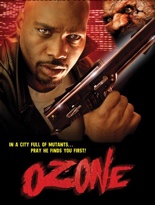
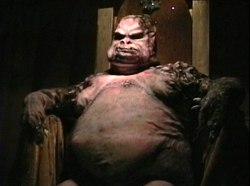

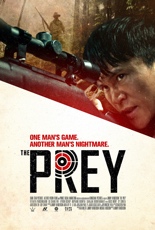 To my knowledge,
To my knowledge,  Putting Xin through his paces from behind the camera is director and co-writer Jimmy Henderson (
Putting Xin through his paces from behind the camera is director and co-writer Jimmy Henderson (
 Shot on video, the monster-mash monstrosity known as Franky and His Pals feels like the management team of your local Spirit Halloween store got drunk after closing and improvised a movie. In reality, it’s made by Gerald Cormier, producer of such X-rated fare as
Shot on video, the monster-mash monstrosity known as Franky and His Pals feels like the management team of your local Spirit Halloween store got drunk after closing and improvised a movie. In reality, it’s made by Gerald Cormier, producer of such X-rated fare as 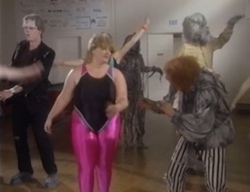 They attend a costume party — conveniently enough, so no one knows their true nature — at a nearby hotel, where they dance, grope women, hop in the sack, judge a bikini contest and participate in one-joke setups that even Rowan and Martin would reject. One running gag has the monsters individually terrified whenever the obese Tammy appears … yet they overwhelmingly vote her the victor in the aforementioned contest — so much for consistency! The night ends when Franky stumbles upon a pot of chili beans in the kitchen, can’t help himself and farts the place into an explosion, which unearths the gold.
They attend a costume party — conveniently enough, so no one knows their true nature — at a nearby hotel, where they dance, grope women, hop in the sack, judge a bikini contest and participate in one-joke setups that even Rowan and Martin would reject. One running gag has the monsters individually terrified whenever the obese Tammy appears … yet they overwhelmingly vote her the victor in the aforementioned contest — so much for consistency! The night ends when Franky stumbles upon a pot of chili beans in the kitchen, can’t help himself and farts the place into an explosion, which unearths the gold. 

